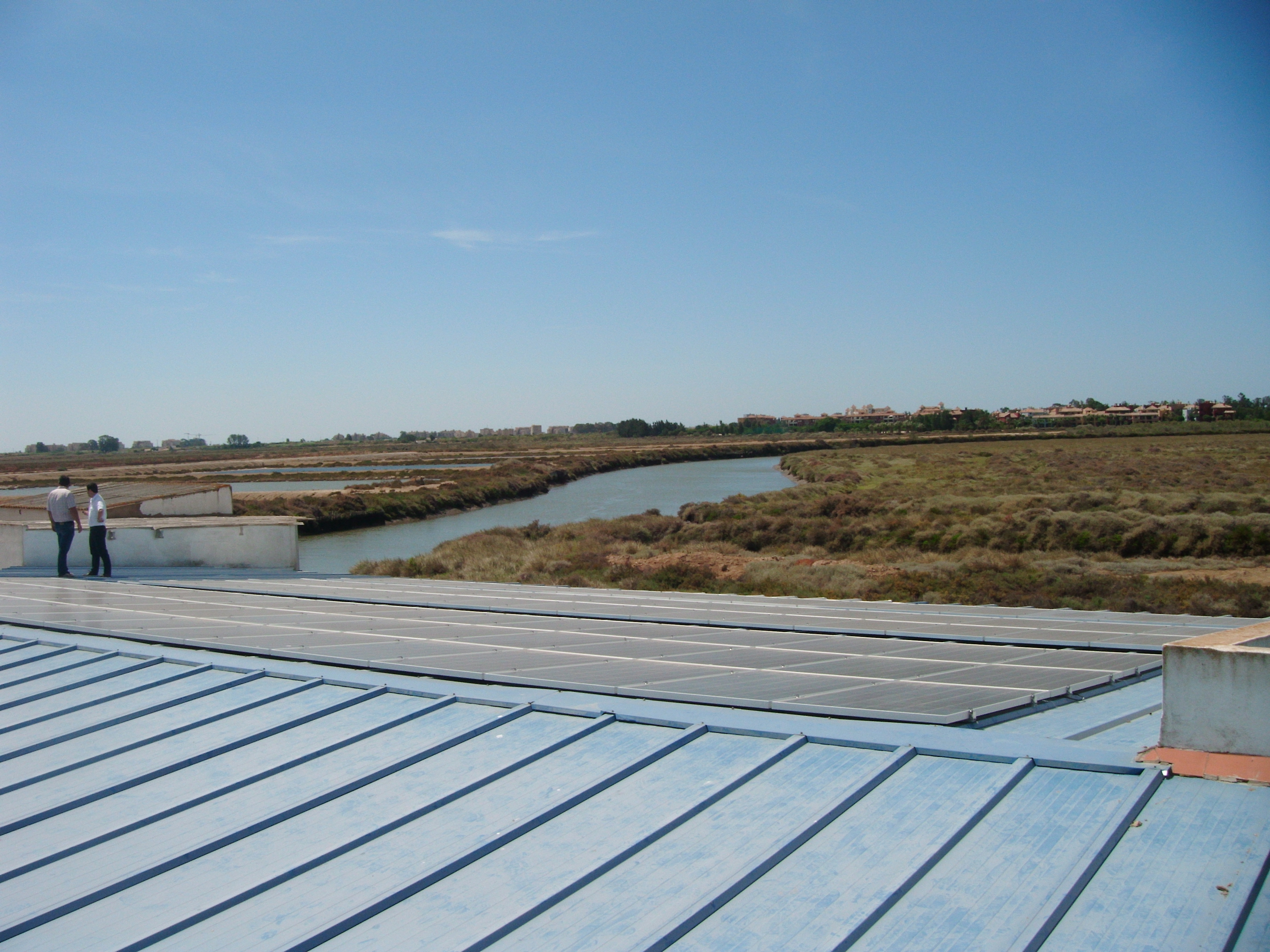Specific photovoltaic compact system designed for the Aquaculture sector
In the framework of AQUASEF project focused on the development of eco-efficient technologies for aquaculture, experts have built a new compact system with electronic circuits specially reinforced against saline environments to increase their endurance.
October 6th 2015- A large and low-efficient energy consumption results in significant costs which affects the economic feasibility of aquaculture sites. Identifying bottlenecks in energy consumption is the challenge AQUASEF project is currently working on in Andalusia.
After conducting energy audits on aquaculture sites, AQUASEF Project has tracked down the main consumption spots in pumping and lighting systems required for fishes growth process. The necessity of increasing temperature in fry rearing tanks, especially during the winter, results in large use of high-power heating elements with a direct impact on the cost.
"We have drafted a Good Practices Manual and established proposed measures to save energy highlighting the improvement of engine maintenance in pumping systems; the replacement of lighting systems in the sites for LED technology, especially at breeding and pre-fattening phases; the replacement of conventional thermal systems for solar systems in culture tanks; and renovate the pumping systems" explains Rafael Jimenez, a specialist in advanced energy engineering from AQUASEF project which is focused on the environmental improvement of aquaculture through the development of eco-efficient technologies.
Following this goal, experts from AQUASEF project have designed and built a photovoltaic compact system specific for the aquaculture sector, with a specific source of power to connect small and medium loads in isolated locations, away from conventional electricity grid. "From lighting spots to data transmission systems, scales or another connection elements needed in remote facilities. Among other advantages, this equipment avoids the use of generators and saves fuel and maintenance costs", Jimenez reveals.
In order to ensure the efficiency and endurance of this new equipment avoiding deterioration, electronic circuits equipped with protective layers against saline environments have been designed. It also includes both a small-power (150 W) and a high performance (400W) system.
Now the project initiates a new phase, where experts will conduct final tests on the equipment and will check if the protection measures against saline environments are effective. "We have chosen as test facility a complex aquaculture production site, with extreme environmental conditions which includes wind of high intensity and humidity, high salinity and temperature, so we hope to verify the feasibility" Jimenez adds.
Furthermore to the design of new equipment, AQUASEF is working on high efficiency oxygen dissolution devices and new designs of phytoplankton culture tanks aiming to produce microalgae biomass as feed supplement for fishes early-growth phase and as a CO2 fixative.
The project is coordinated by ARIEMA which leads a consortium formed by Heliotrónica Systems, D & B Tech, Esteros de Canela and the Andalusian Aquaculture Technology Center (CTAQUA). AQUASEF promoters expect that the application of all technologies arising from this project will lead to a drastic reduction of energy and liquid oxygen dependence and thus to reduce the production costs of the aquaculture sites.
